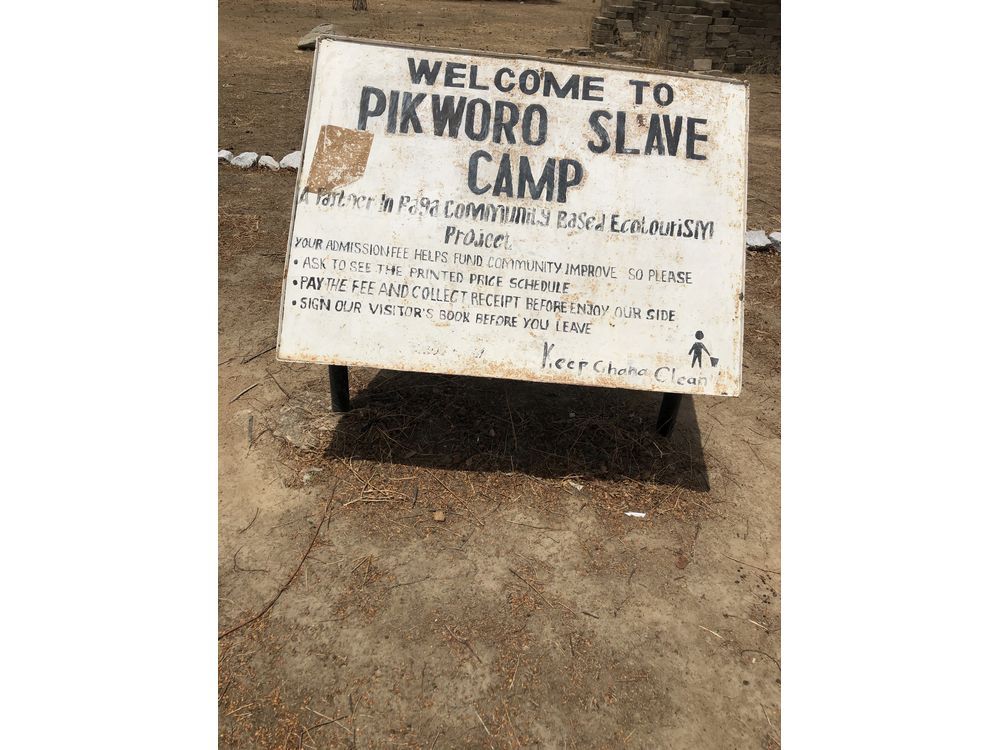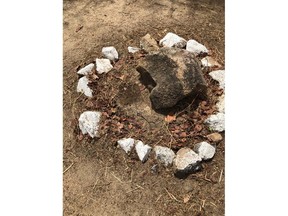Adam: Don’t forget Picro’s role in the African slave trade

Picro symbolizes African history and responsibility in the surge in the slave trade.
Article content
Paga, Ghana — The small town of Paga, at the northernmost tip of Ghana, is famous for its friendly crocodile colonies. Located on the border with Burkina Faso, about 700 km from the capital Accra, the town attracts people and plays and interacts with the sacred crocodile. These are not ordinary crocodiles. They are believed to absorb the spirits of their ancestors, and you can sit on their backs, stroke them, or live and brag with their tails. It goes against belief.
Advertising 2
Article content
I used to go to Paga with a crocodile with my son, but the town has perhaps a more important historical relic, the Piclo Slave Camp, which is home to thousands of Africans. I didn’t know that for a long time, the nightmare of slavery began first.
Picro became the top of the to-do list, and after the COVID-19 restrictions were relaxed, he visited the camp with a friend when he visited Ghana in March. It takes 12 hours by car from Akra.
Many visitors to Ghana are aware of coastal fortresses and castles where millions of Africans have been transported to the horrors of unknown lands in the New World. However, due to the forced march of slaves to the beach, due attention has not been paid to the suffering and trauma of slaves. The slave trade tragedy began deeply, not in the Atlantic coast or the Middle Passage, but in the depths of African warlords and slave traders attacking towns and villages and selling prisoners of war to European slave traders. Picro tells the story and the Africans’ responsibility for the surge in the slave trade.
Advertising 3
Article content
The camp is located in a peaceful community called Naania, whose beauty is in the middle of the picturesque rocky terrain that betrays its violent and tragic past. This camp was the place where the captured slaves were first gathered under security, and it was from these camps that the death march to the coastal slave ships began in the 18th and 19th centuries. is.
A large “Welcome to Piclo Slave Camp” sign welcomes visitors. The camp appears to be ignored and lacks government funding to maintain it. Guide Joseph begins with a brief summary. The story of Picro is mainly derived from oral history, passed down from generation to generation, and is featured in songs, dances and festivals. It’s a miserable history. The camp was founded by a notorious slave assailant named Bagao and is said to have been used by more infamous slave assailants such as Babats and Samori. It worked for 40 years.
Advertising 4
Article content
The first destination of the tour is the so-called “eating rock”. This is the formation of a complex rock carved with holes for slaves to serve food. The natural hot spring between the rocks functioned as a water source. There was a large meeting place for slaves, and the weak and dying were sorted out from the strong.
Next is the Rock of Punishment, where rebellious slaves were chained or tied up and faced the sun for days as a lesson to others. Many were blind and abandoned. There are more stops and the coolest is the mass burial ground marked with a small white rock circle. You wonder about the people who were here: one day it’s free and the next day it suffers. The group of singers recreates the songs that the slaves sang when they thought about their destiny. It’s sorrowful.
Advertising 5
Article content
But for the slaves, the worst hasn’t come yet.

From Picro, they perform a brutal 300 km trek to the infamous Salaga slave market, where they are put up for sale. In most cases, the nightmare intensifies as they are led to a dangerous final journey south about 600 km to the slave ship they are waiting for. Many perish on the way. The survivors eventually end up in a town called Assinmanso. There, you will take the only bath in the soil of the house called the Slave River. Then embark on a never-ending journey on a slave ship.
The story of Picro is miserable, but everyone remembers it because it has to be told over and over again.
Mohamed Adam I’m an Ottawa writer and commentator. Contact him at nylamiles48@gmail.com
Adam: Don’t forget Picro’s role in the African slave trade
Source link Adam: Don’t forget Picro’s role in the African slave trade




